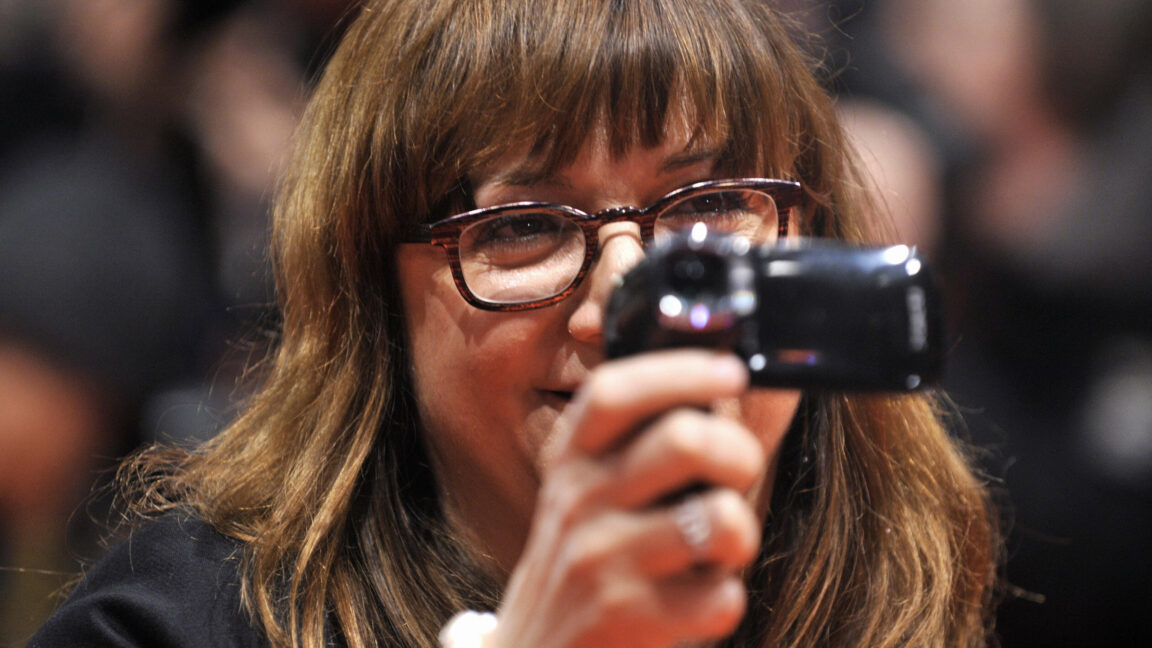
How should we treat beings that might be sentient?
arstechnica.com
Being aware of the maybe self-aware How should we treat beings that might be sentient? A book argues that we've not thought enough about things that might think. Lindsey Laughlin Nov 30, 2024 7:07 am | 20 What rights should a creature with ambiguous self-awareness, like an octopus, be granted. Credit: A. Martin UW Photography What rights should a creature with ambiguous self-awareness, like an octopus, be granted. Credit: A. Martin UW Photography Story textSizeSmallStandardLargeWidth *StandardWideLinksStandardOrange* Subscribers only Learn moreIf you arent yet worried about the multitude of ways you inadvertently inflict suffering onto other living creatures, you will be after reading The Edge of Sentience by Jonathan Birch. And for good reason. Birch, a Professor of Philosophy at the London College of Economics and Political Science, was one of a team of experts chosen by the UK government to establish the Animal Welfare Act (or Sentience Act) in 2022a law that protects animals whose sentience status is unclear.According to Birch, even insects may possess sentience, which he defines as the capacity to have valenced experiences, or experiences that feel good or bad. At the very least, Birch explains, insects (as well as all vertebrates and a selection of invertebrates) are sentience candidates: animals that may be conscious and, until proven otherwise, should be regarded as such.Although it might be a stretch to wrap our mammalian minds around insect sentience, it is not difficult to imagine that fellow vertebrates have the capacity to experience life, nor does it come as a surprise that even some invertebrates, such as octopuses and other cephalopod mollusks (squid, cuttlefish, and nautilus) qualify for sentience candidature. In fact, one species of octopus, Octopus vulgaris, has been protected by the UKs Animal Scientific Procedures Act (ASPA) since 1986, which illustrates how long we have been aware of the possibility that invertebrates might be capable of experiencing valenced states of awareness, such as contentment, fear, pleasure, and pain.A framework for fence-sittersNon-human animals, of course, are not the only beings with an ambiguous sentience stature that poses complicated questions. Birch discusses people with disorders of consciousness, embryos and fetuses, neural organoids (brain tissue grown in a dish), and even AI technologies that reproduce brain functions and/or mimic human behavior, all of which share the unenviable position of being perched on the edge of sentiencea place where it is excruciatingly unclear whether or not these individuals are capable of conscious experience.Whats needed, Birch argues, when faced with such staggering uncertainty about the sentience stature of other beings, is a precautionary framework that outlines best practices for decision-making regarding their care. And in The Edge of Sentience, he provides exactly that, in meticulous, orderly detail.Over more than 300 pages, he outlines three fundamental framework principles and 26 specific case proposals about how to handle complex situations related to the care and treatment of sentience-edgers. For example, Proposal 2 cautions that a patient with a prolonged disorder of consciousness should not be assumed incapable of experience and suggests that medical decisions made on their behalf cautiously presume they are capable of feeling pain. Proposal 16 warns about conflating brain size, intelligence, and sentience, and recommends decoupling the three so that we do not incorrectly assume that small-brained animals are incapable of conscious experience.Surgeries and stem cellsBe forewarned, some topics in The Edge of Sentience are difficult. For example, Chapter 10 covers embryos and fetuses. In the 1980s, Birch shares, it was common practice to not use anesthesia on newborn babies or fetuses when performing surgery. Why? Because whether or not newborns and fetuses experience pain was up for debate. Rather than put newborns and fetuses through the risks associated with anesthesia, it was accepted practice to give them a paralytic (which prevents all movement) and carry on with invasive procedures, up to and including heart surgery.After parents raised alarms over the devastating outcomes of this practice, such as infant mortality, it was eventually changed. Birchs takeaway message is clear: When in doubt about the sentience stature of a living being, we should probably assume it is capable of experiencing pain and take all necessary precautions to prevent it from suffering. To presume the opposite can be unethical.This guidance is repeated throughout the book. Neural organoids, discussed in Chapter 11, are mini-models of brains developed from stem cells. The potential for scientists to use neural organoids to unravel the mechanisms of debilitating neurological conditionsand to avoid invasive animal research while doing sois immense. It is also ethical, Birch posits, since studying organoids lessens the suffering of research animals. However, we dont yet know whether or not neural tissue grown in a dish has the potential to develop sentience, so he argues that we need to develop a precautionary approach that balances the benefits of reduced animal research against the risk that neural organoids are capable of being sentient.A four-pronged testAlong this same line, Birch says, all welfare decisions regarding sentience-edgers require an assessment of proportionality. We must balance the nature of a given proposed risk to a sentience candidate with potential harms that could result if nothing is done to minimize the risk. To do this, he suggests testing four criteria: permissibility-in-principle, adequacy, reasonable necessity, and consistency. Birch refers to this assessment process as PARC, and deep dives into its implementation in chapter eight.When applying the PARC criteria, one begins by testing permissibility-in-principle: whether or not the proposed response to a risk is ethically permissible. To illustrate this, Birch poses a hypothetical question: would it be ethically permissible to mandate vaccination in response to a pandemic? If a panel of citizens were in charge of answering this question, they might say no, because forcing people to be vaccinated feels unethical. Yet, when faced with the same question, a panel of experts might say yes, because allowing people to die who could be saved by vaccination also feels unethical. Gauging permissibility-in-principle, therefore, entails careful consideration of the likely possible outcomes of a proposed response. If an outcome is deemed ethical, it is permissible.Next, the adequacy of a proposed response must be tested. A proportionate response to a risk must do enough to lessen the risk. This means the risk must be reduced to an acceptable level or, if thats not possible, a response should deliver the best level of risk reduction that can be achieved via an ethically permissible option.The third test is reasonable necessity. A proposed response to a risk must not overshootit should not go beyond what is reasonably necessary to reduce risk, in terms of either cost or imposed harm. And last, consistency should be considered. The example Birch presents is animal welfare policy. He suggests we should always aim for taxonomic consistency: our treatment of one group of animals (e.g., vertebrates) should be consistent with our treatment of another (e.g., invertebrates).The Edge of Sentience, as a whole, is a dense text overflowing with philosophical rhetoric. Yet this rhetoric plays a crucial role in the storytelling: it is the backbone for Birchs clear and organized conclusions, and it serves as a jumping-off point for the logical progression of his arguments. Much like I think, therefore I am gave Ren Descartes a foundation upon which to build his idea of substance dualism, Birch uses the fundamental position that humans should not inflict gratuitous suffering onto fellow creatures as a base upon which to build his precautionary framework.For curious readers who would prefer not to wade too deeply into meaty philosophical concepts, Birch generously provides a shortcut to his conclusions: a cheat sheet of his framework principles and special case proposals is presented at the front of the book.Birchs ultimate message in The Edge of Sentience is that a massive shift in how we view beings with a questionable sentience status should be made. And we should ideally make this change now, rather than waiting for scientific research to infallibly determine who and what is sentient. Birch argues that one way that citizens and policy-makers can begin this process is by adopting the following decision-making framework: always avoid inflicting gratuitous suffering on sentience candidates; take precautions when making decisions regarding a sentience candidate; and make proportional decisions about the care of sentience candidates that are informed, democratic and inclusive.You might be tempted to shake your head at Birchs confidence in humanity. No matter how deeply you agree with his stance of doing no harm, its hard to have confidence in humanity given our track record of not making big changes for the benefit of living creatures, even when said creatures includes our own species (cue in global warming here). It seems excruciatingly unlikely that the entire world will adopt Birchs rational, thoughtful, comprehensive plan for reducing the suffering of all potentially sentient creatures. Yet Birch, a philosopher at heart, ignores human history and maintains a tone of articulate, patient optimism. He clearly believes in ushe knows we can do betterand he offers to hold our hands and walk us through the steps to do so.Lindsey Laughlin is a science writer and freelance journalist who lives in Portland, Oregon, with her husband and four children. She earned her BS from UC Davis with majors in physics, neuroscience, and philosophy. 20 Comments Prev story
0 Comments
·0 Shares
·72 Views









